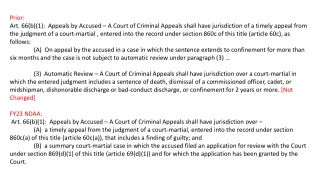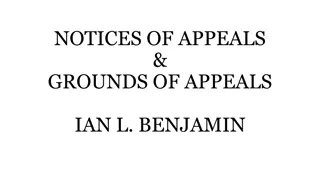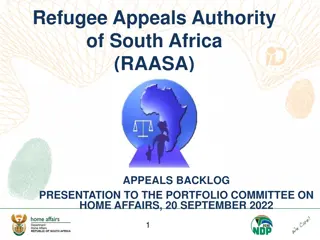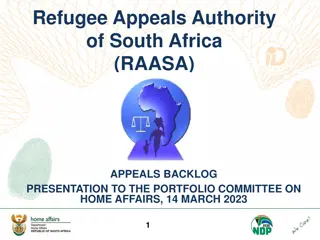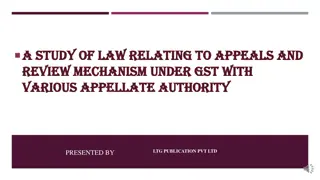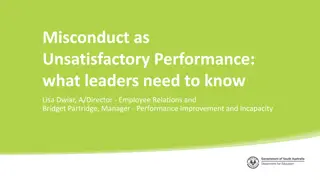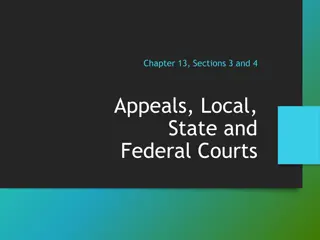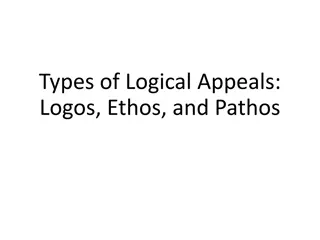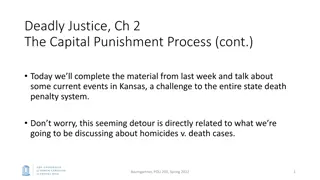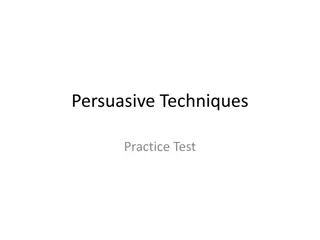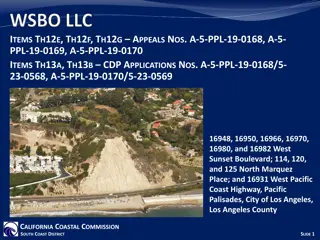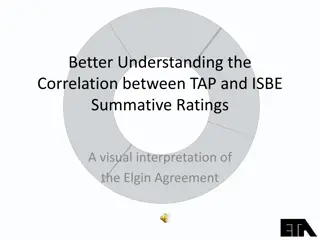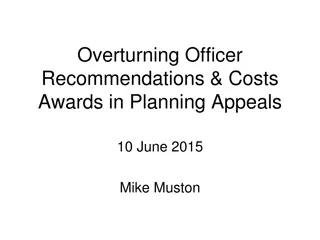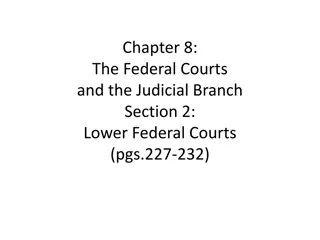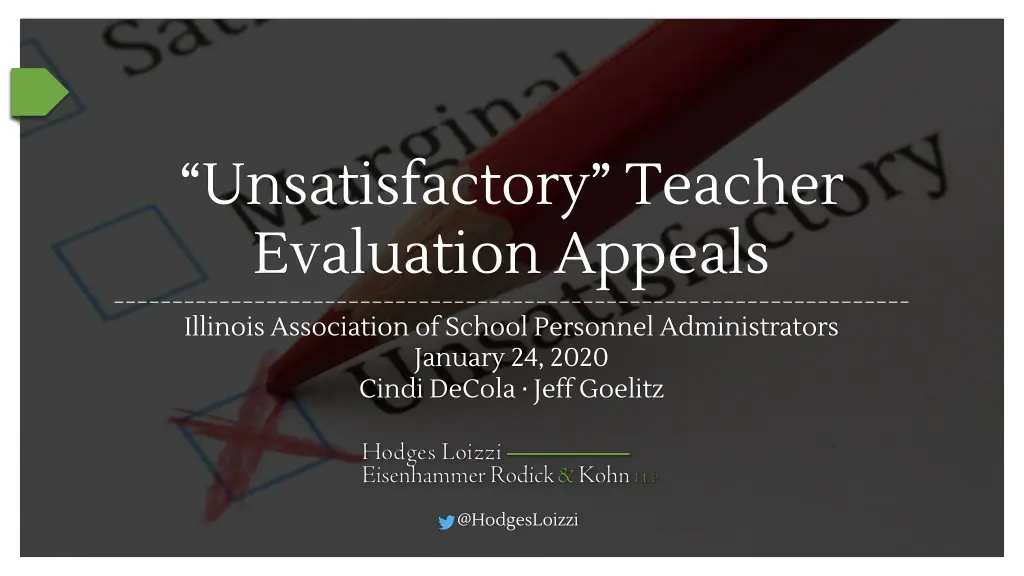
Understand Unsatisfactory Teacher Evaluation Appeals in Illinois
Learn about the appeals process for unsatisfactory teacher ratings in Illinois, including the role of unions, the PERA Joint Committee, and the criteria for successful appeals. Find out what type of ratings are appealable and the steps involved in bargaining for a replacement rating.
Download Presentation

Please find below an Image/Link to download the presentation.
The content on the website is provided AS IS for your information and personal use only. It may not be sold, licensed, or shared on other websites without obtaining consent from the author. If you encounter any issues during the download, it is possible that the publisher has removed the file from their server.
You are allowed to download the files provided on this website for personal or commercial use, subject to the condition that they are used lawfully. All files are the property of their respective owners.
The content on the website is provided AS IS for your information and personal use only. It may not be sold, licensed, or shared on other websites without obtaining consent from the author.
E N D
Presentation Transcript
Unsatisfactory Teacher Evaluation Appeals Illinois Association of School Personnel Administrators January 24, 2020 Cindi DeCola Jeff Goelitz @HodgesLoizzi @HodgesLoizzi
Beginning with the first school year following 8/27/19* 8/27/19*, each school district shall, in good faith cooperation with its teachers, or, if applicable, in good faith bargaining with its teachers in good faith bargaining with its teachers union union, develop and implement an appeals process for Unsatisfactory ratings that includes but is not limited to: P.A. 101-591 (amending 105 ILCS 5/24A-5.5)
an assessment of the original rating by a panel of qualified evaluators of qualified evaluators agreed to by the PERA Joint Committee panel that has the power to revoke power to revoke the Unsatisfactory rating it deems erroneous. P.A. 101-591 (amending 105 ILCS 5/24A-5.5)
The PERA Joint Committee shall determine the criteria for successful appeals criteria for successful appeals; however, the issuance of a rating issuance of a rating to replace an Unsatisfactory rating must be determined must be determined through bargaining through bargaining between the teachers union, if any, and the school district. P.A. 101-591 (amending 105 ILCS 5/24A-5.5)
Unions Role Bargain the appeal process Bargain the replacement rating for any Unsatisfactory ratings that get revoked PERA Joint Committee s Role Agree to a panel of qualified evaluators (i.e., who) Establish criteria for successful appeals (i.e., whether rating is erroneous ) Qualified-Evaluator Panel s Role Apply criteria established by PERA Joint Committee Decide whether to revoke an Unsatisfactory rating as erroneous
Bargaining the Appeal Process with the Union Union
What type of rating will be appealable? Summative ratings only Not: ? Unsatisfactory ratings in individual domains or component areas ? Unsatisfactory ratings on formative evaluations or observations ? Remediation Plan evaluations
Where will the appeal process be documented? CBA vs. Evaluation Plan vs. Side Letter Consider impact on the grievability of the appeal process
Will an appeal bar a simultaneous grievance? If evaluation language exists in a CBA and can be grieved, consider whether an appeal waives the right to also grieve the evaluation Goal is not to have to respond to challenges to an Unsatisfactory evaluation in multiple places at once
Does this apply to non-tenured teachers? Law doesn t limit to tenured only Even if non-tenured teacher successfully appeals Unsatisfactory rating, if legitimate performance concerns remain, end-of-year dismissal is still an option
What should the appeal contain? Consider creating a template form for this purpose Require teacher to provide a specific explanation of the alleged error(s) e.g., point to specific component areas or pieces of evidence they believe were ignored or completed inaccurately A general I don t agree with this rating should not be enough to trigger the appeal or revoke the original rating
With whom and how does the appeal get filed? In writing (date-stamp when appeal is received) File with: Evaluator? Superintendent? HR Director? Designated member of QE Panel? Courtesy copy to evaluator so he/she can respond
When must the appeal be submitted/filed? Relatively short deadline to file appeal e.g., 7 calendar days For tenured teacher appeals, consider provision that automatically tolls i.e., pauses 30-school-day deadline for a remediation plan For non-tenured teacher appeals, factor in the statutory 45- calendar-day non-renewal deadline for the Board to act on a non-renewal
How long will the panel have to review the appeal? Keep the process simple and brief e.g., 14 calendar days Consider remediation plan deadline and non-renewal deadline
Does the panel re-evaluate the teacher? Ideally, panel doesn t do additional observations or collect additional evidence Panel shouldn t be deciding whether they might have reached a different conclusion if they were the evaluator (i.e., no Monday morning quarterbacking) Focus should be on whether the original evaluator supported his/her conclusions and rating
Is the teacher entitled to a hearing before the panel? An in-person hearing is permissible, but too formal & cumbersome Instead, ? Teacher should outline specific concerns in the appeal ? Evaluator should provide written response ? Panel then can consider the evidence on paper
What rating will replace a revoked rating? Default to a Needs Improvement rating? Throw out the Unsatisfactory rating and instead re-evaluate the teacher for the remainder of the school year or in the following school year (with the re-evaluation done either by the original evaluator or by a substitute evaluator)? Correct erroneous components or mathematical errors, and recalculate?
Will decisions of the panel require a majority vote? Logically, yes, so have: ? odd number of qualified evaluators; or ? default rule that the original rating stands if a tie vote; or ? a trusted tiebreaker
PERA Joint Committee PERA Joint Committee Chooses Qualified-Evaluator Panel
Standing panel or a new panel for every appeal? Standing panel will be easier to implement and will help to ensure uniformity and consistency Ad hoc panel will allow for the selection of evaluators who are most suitable to the specific teacher who has filed the appeal
Identifying specific people or positions? Joint Committee can: ? appoint specific people to serve as evaluators (e.g., Ms. Smith ) or ? identify panelists based on their position in the District (e.g., the middle school principal )
What if a panelists evaluation is being appealed? Evaluator abstains on that particular appeal, or include a mechanism for a replacement panelist for that appeal If an abstention could lead to a tie vote, try to clarify that the original evaluation rating stands in the event of a tie
Can teachers be on the panel? Only requirement is that the person is a qualified evaluator conceivably, this could include teachers Risk of peers reviewing peers Expect the union representatives on the PERA Joint Committee to push for teachers to be on the panel Consider the likelihood that teachers who are qualified evaluators may have no practical experience
Can panel include external qualified evaluators? Law doesn t require the panel to be composed of District employees In some cases, it might be necessary to involve outside evaluators if there are not enough internal evaluators to create a panel But in most cases, preferable to have employees on the panel
PERA Joint Committee PERA Joint Committee Establishes Criteria for Successful Appeals
What does erroneous mean? Avoid criteria that require panelists to substitute their own judgment of evidence that they did not witness firsthand Aim for a standard/criteria in which the original evaluator s rating stands unless there is a specific, clear mistake or lack of evidence to support a conclusion Even if the panelists might have decided the other way, if the original evaluator has offered some legitimate support for his/her conclusions, it should not be considered erroneous
What criteria should be avoided? Don t include criteria that would preclude an Unsatisfactory rating in the first place e.g., ? a teacher who appeals an Unsatisfactory rating and whose last rating was either Excellent or Proficient will automatically be deemed Needs Improvement
Can you factor in prior evaluation ratings? Conceivably, yes If using, consider trying to include a criteria that upholds the original Unsatisfactory rating if prior rating was Needs Improvement
Convene Qualified to Review Appeal Qualified- -Evaluator Panel Evaluator Panel
What is the panels authority? 2 things only: Apply the criteria (not to make up its own criteria); and 1. Decide whether an evaluation is erroneous and therefore should be revoked (not to decide if they would have done things differently if they had been the original evaluator akin to NFL replay rule) 2.
What should panels decision entail? Law doesn t specify a level of detail Written decision At a minimum, state whether the original rating is revoked or upheld
Cindi DeCola cdecola@hlerk.com Jeff Goelitz jgoelitz@hlerk.com This is intended solely to provide information to the school community. It is not legal advice or a substitute for legal counsel. It is intended as advertising but not as a solicitation of an attorney/client relationship. @HodgesLoizzi www.hlerk.com
Unsatisfactory Teacher Evaluation Appeals Illinois Association of School Personnel Administrators January 24, 2020 Cindi DeCola Jeff Goelitz @HodgesLoizzi @HodgesLoizzi
Beginning with the first school year following 8/27/19* 8/27/19*, each school district shall, in good faith cooperation with its teachers, or, if applicable, in good faith bargaining with its teachers in good faith bargaining with its teachers union union, develop and implement an appeals process for Unsatisfactory ratings that includes but is not limited to: P.A. 101-591 (amending 105 ILCS 5/24A-5.5)
an assessment of the original rating by a panel of qualified evaluators of qualified evaluators agreed to by the PERA Joint Committee panel that has the power to revoke power to revoke the Unsatisfactory rating it deems erroneous. P.A. 101-591 (amending 105 ILCS 5/24A-5.5)
The PERA Joint Committee shall determine the criteria for successful appeals criteria for successful appeals; however, the issuance of a rating issuance of a rating to replace an Unsatisfactory rating must be determined must be determined through bargaining through bargaining between the teachers union, if any, and the school district. P.A. 101-591 (amending 105 ILCS 5/24A-5.5)
Unions Role Bargain the appeal process Bargain the replacement rating for any Unsatisfactory ratings that get revoked PERA Joint Committee s Role Agree to a panel of qualified evaluators (i.e., who) Establish criteria for successful appeals (i.e., whether rating is erroneous ) Qualified-Evaluator Panel s Role Apply criteria established by PERA Joint Committee Decide whether to revoke an Unsatisfactory rating as erroneous
Bargaining the Appeal Process with the Union Union
What type of rating will be appealable? Summative ratings only Not: ? Unsatisfactory ratings in individual domains or component areas ? Unsatisfactory ratings on formative evaluations or observations ? Remediation Plan evaluations
Where will the appeal process be documented? CBA vs. Evaluation Plan vs. Side Letter Consider impact on the grievability of the appeal process
Will an appeal bar a simultaneous grievance? If evaluation language exists in a CBA and can be grieved, consider whether an appeal waives the right to also grieve the evaluation Goal is not to have to respond to challenges to an Unsatisfactory evaluation in multiple places at once
Does this apply to non-tenured teachers? Law doesn t limit to tenured only Even if non-tenured teacher successfully appeals Unsatisfactory rating, if legitimate performance concerns remain, end-of-year dismissal is still an option
What should the appeal contain? Consider creating a template form for this purpose Require teacher to provide a specific explanation of the alleged error(s) e.g., point to specific component areas or pieces of evidence they believe were ignored or completed inaccurately A general I don t agree with this rating should not be enough to trigger the appeal or revoke the original rating
With whom and how does the appeal get filed? In writing (date-stamp when appeal is received) File with: Evaluator? Superintendent? HR Director? Designated member of QE Panel? Courtesy copy to evaluator so he/she can respond
When must the appeal be submitted/filed? Relatively short deadline to file appeal e.g., 7 calendar days For tenured teacher appeals, consider provision that automatically tolls i.e., pauses 30-school-day deadline for a remediation plan For non-tenured teacher appeals, factor in the statutory 45- calendar-day non-renewal deadline for the Board to act on a non-renewal
How long will the panel have to review the appeal? Keep the process simple and brief e.g., 14 calendar days Consider remediation plan deadline and non-renewal deadline
Does the panel re-evaluate the teacher? Ideally, panel doesn t do additional observations or collect additional evidence Panel shouldn t be deciding whether they might have reached a different conclusion if they were the evaluator (i.e., no Monday morning quarterbacking) Focus should be on whether the original evaluator supported his/her conclusions and rating
Is the teacher entitled to a hearing before the panel? An in-person hearing is permissible, but too formal & cumbersome Instead, ? Teacher should outline specific concerns in the appeal ? Evaluator should provide written response ? Panel then can consider the evidence on paper
What rating will replace a revoked rating? Default to a Needs Improvement rating? Throw out the Unsatisfactory rating and instead re-evaluate the teacher for the remainder of the school year or in the following school year (with the re-evaluation done either by the original evaluator or by a substitute evaluator)? Correct erroneous components or mathematical errors, and recalculate?
Will decisions of the panel require a majority vote? Logically, yes, so have: ? odd number of qualified evaluators; or ? default rule that the original rating stands if a tie vote; or ? a trusted tiebreaker

